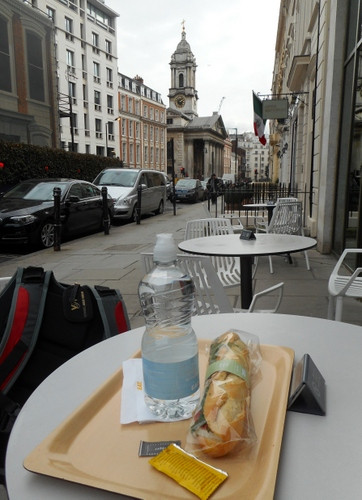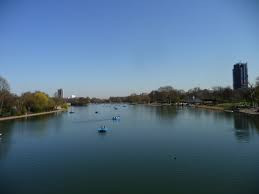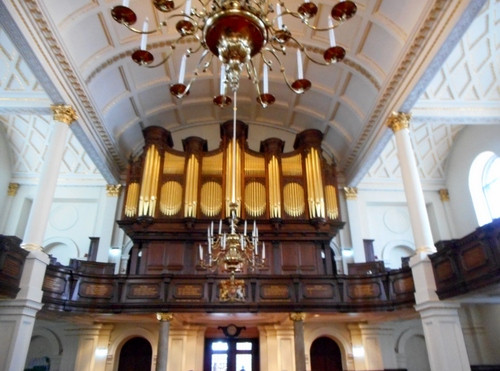Saint George’s Hanover Square, nestled in London’s prestigious Mayfair district, stands as a testament to early 18th-century English architecture and a treasure trove of historical narratives. Consecrated in 1724, this iconic church, designed by John James, is one of the distinguished “fifty new churches” brought to life by Queen Anne’s Act of 1711. Like its contemporary, Saint John’s Smith Square, now a celebrated concert hall, Saint George’s has played a significant role in London’s cultural and social fabric for centuries.
 Exterior view of St. George's Hanover Square church in Mayfair, London
Exterior view of St. George's Hanover Square church in Mayfair, London
(A moment of reflection outside Saint George’s before exploring its rich history)
For many, including myself, Saint George’s holds a deeply personal resonance. My own family history is intertwined with this sacred place; my father, Harvey, was christened within its walls on October 26th, 1914. At that time, my grandfather served as a coachman for one of Mayfair’s noble families, a testament to the area’s aristocratic heritage and the church’s central role in the community.
Beyond personal connections, Saint George’s is intrinsically linked to musical greatness. George Frideric Handel, the celebrated composer, was a regular worshipper here. Living just a short walk away in Brook Street since 1723, Saint George’s was Handel’s parish church. His nearby residence, a site of musical pilgrimage (as detailed in previous articles on streetsounds.net, exploring connections from Handel to Hendrix and the musical legacy of Brook Street), underscores the area’s rich artistic history. Interestingly, another significant musician resided next door two centuries later, further cementing this location as a hub of musical innovation.
Handel’s influence on Saint George’s extends beyond his regular attendance. He offered his expertise in advising on the church’s inaugural organ, collaborating with Francesco Geminiani, a composer hailing from Lucca. This connection to Lucca through Geminiani, a figure previously highlighted on streetsounds.net for his remarkable contributions to music, adds another layer to the church’s fascinating history. The annual Handel Festival at Saint George’s stands as a vibrant tribute to his enduring legacy within these walls.
Furthermore, Saint George’s became a cherished venue for experiencing profound musical performances. For years, Good Friday at Saint George’s meant immersing oneself in Johann Sebastian Bach’s St Matthew Passion, widely considered one of the pinnacles of musical achievement. The church’s acoustics and atmosphere provided an unparalleled setting for such a powerful and moving work.
Reflecting its prime location in Mayfair, Saint George’s has been the backdrop for numerous high-society weddings throughout history. Notable figures who exchanged vows here include Prime Minister Benjamin Disraeli in 1839, marrying Mary Lewis; Emma Hart, who became Lady Hamilton, marrying Sir William Hamilton in 1791; and Guglielmo Marconi, the pioneering inventor of wireless telegraphy, marrying Beatrice O’Brien in 1905. Even Theodore Roosevelt, later a U.S. President, married Edith Carron here in 1886, marking the church as a venue of international significance.
Yet, amidst these joyous occasions, Saint George’s also witnessed poignant personal dramas. Perhaps the most heart-wrenching is the story of Percy Bysshe Shelley and Harriet Westbrook. In 1814, they officially solemnized their marriage at Saint George’s, having initially eloped to Scotland in 1811. Tragically, their union ended in sorrow. Harriet, mother to Shelley’s two children, Ianthe and Charles, tragically took her own life in 1816 in Hyde Park’s Serpentine after Shelley left her for Mary Godwin.
 Image of the Serpentine lake in Hyde Park, London, where Harriet Shelley tragically passed away
Image of the Serpentine lake in Hyde Park, London, where Harriet Shelley tragically passed away
(The Serpentine in Hyde Park, a place forever linked to the tragic story of Harriet Shelley)
Harriet’s suicide note, a testament to her intelligence and sensitivity, reveals the depth of her despair and forgiveness. Shelley, though achieving literary fame, bore the emotional weight of this tragedy, never regaining custody of his children and remaining haunted by the events surrounding Harriet’s death.
On a brighter note, Saint George’s is also a visual and artistic delight. It boasts exquisite Flemish stained glass and a remarkably preserved eighteenth-century interior. The unique layout of the upstairs stalls creates an intriguing maze-like space. A magnificent rendition of the Last Supper by William Kent, a prominent figure in English Palladianism, further enhances the church’s artistic appeal. Kent, who also decorated Kensington Palace and Chiswick House, had previously worked in Rome for Cardinal Ottoboni, the same patron for whom Handel composed early cantatas. One can only wonder if the paths of Kent and Handel ever crossed in Rome, adding another layer of interconnectedness to the church’s history.
[Image showcasing the intricate details of the church’s interior stalls] (https://i0.wp.com/longoio2.wordpress.com/wp-content/uploads/2016/03/02282016-374.jpg)
[Detailed view of the stained glass windows within St. George’s Hanover Square] (https://i0.wp.com/longoio2.wordpress.com/wp-content/uploads/2016/03/02282016-381.jpg)
[Close-up of the William Kent painting of the Last Supper] (https://i0.wp.com/longoio2.wordpress.com/wp-content/uploads/2016/03/02282016-382.jpg)
[Another perspective of the church’s interior, highlighting the architectural details] (https://i0.wp.com/longoio2.wordpress.com/wp-content/uploads/2016/03/02282016-379.jpg)
[Detail of the organ pipes within St. George’s Hanover Square] (https://i0.wp.com/longoio2.wordpress.com/wp-content/uploads/2016/03/02282016-375.jpg)
William Kent’s influence extended beyond painting, as he became a leading proponent of the Palladian style, shaping the architectural landscape of England with iconic structures like Horse Guards Parade in Whitehall.
Finally, Saint George’s is home to a truly exceptional organ, rebuilt in 2012 by the American firm Richard Fowkes & Co. This instrument, a marvel of engineering and sound (further details available on the church’s website), fills the space with celestial harmonies, perhaps offering solace to the spirits of all those connected to Saint George’s, both in joy and sorrow.
 Image of the magnificent organ at St. George's Hanover Square
Image of the magnificent organ at St. George's Hanover Square
It’s a place so historically resonant, one might even wish for the return of the two cast-iron pointer statues that once graced its entrance, sadly stolen years ago, to complete the picture of this remarkable Hanover Street, Lucca-connected landmark (referencing Geminiani’s origin and the street’s location as subtle links to the keyword).
